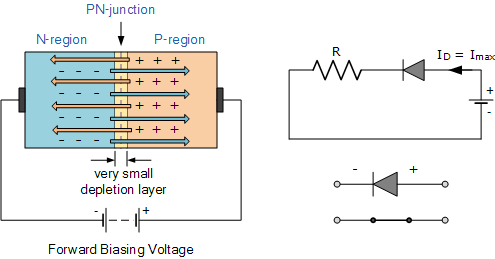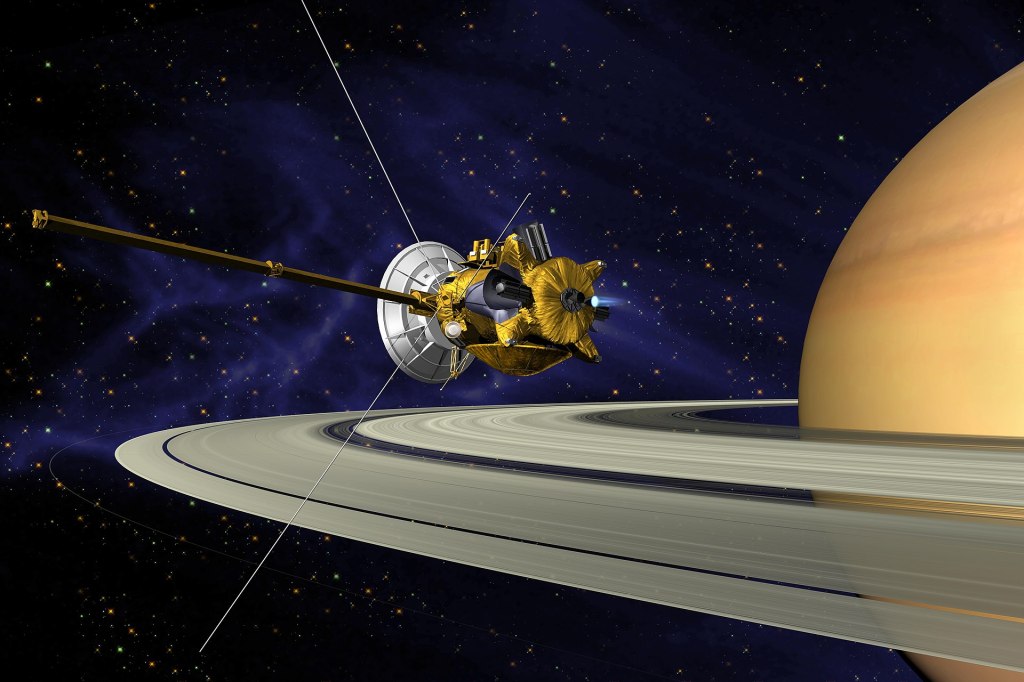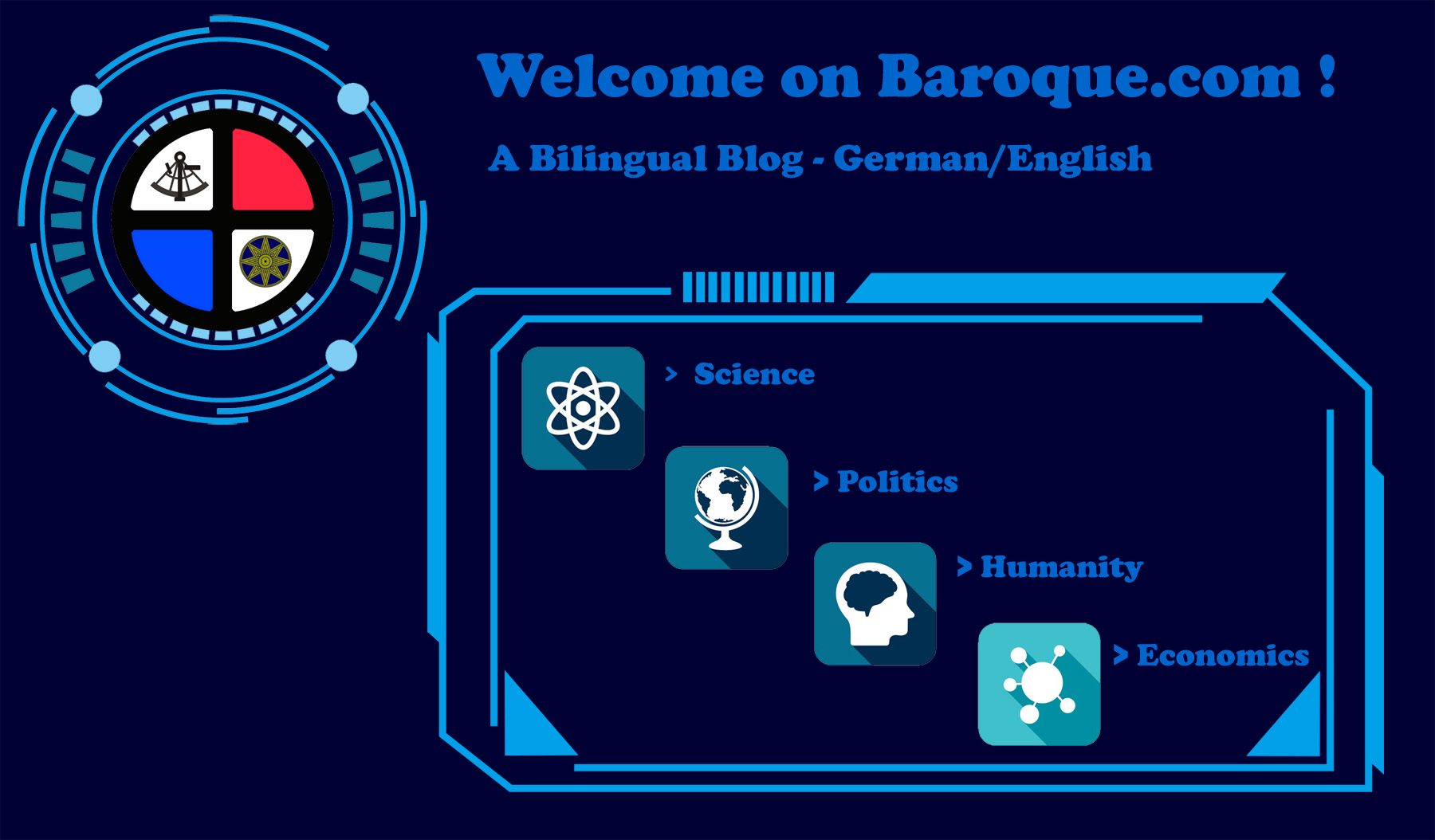In Today’s Science News, we learn about the discovery of unknown antibiotic-resistant genes in bacteria, the development of a new superconducting diode which could improve the performance of quantum computers and AI as well as evidence for phosphorus on Saturn’s moon Enceladus.

Article 1: Previously unknown antibiotic resistance widespread among bacteria
SD-Date: June 5, 2023
Et-Date: June 11, 2023
ScienceDaily-Summary: „Genes that make bacteria resistant to antibiotics are much more widespread in our environment than was previously realized. A new study shows that bacteria in almost all environments carry resistance genes, with a risk of them spreading and aggravating the problem of bacterial infections that are untreatable with antibiotics.“
Open-Access Study: https://microbiomejournal.biomedcentral.com/articles/10.1186/s40168-023-01479-0
Method of Research
The study was conducted by the Chalmers University of Technology and the University of Gothenburg in Sweden. The researchers used DNA from two databases, the first being ResFinder that already contained thousands of previously known antibiotic resistance genes in bacteria and then extended upon it with a large number of new resistance genes they had found with their own analysis. In total, the resistance genes amounted to 20,000.
MGnify served as the second database, it contains large quantities of bacterial DNA from various sources ’such as bacteria living on and in people, in sewage treatment plants and from the soil and water‘. It was used to find out how common the resistance genes were in bacterial DNA. Overall, 630 billion DNA sequences were analysed.
For the analysis, the researchers used a method known as the metagenomics. It isn’t new, but until now it hadn’t been used to analyse new types of anti-biotic resistance genes in the aforementioned quantities.
| Definition of Metagenomics (source: https://www.genome.gov/genetics-glossary/Metagenomics) |
| „Metagenomics is the study of the structure and function of entire nucleotide sequences isolated and analyzed from all the organisms (typically microbes) in a bulk sample. Metagenomics is often used to study a specific community of microorganisms, such as those residing on human skin, in the soil or in a water sample.“ (June 7, 2023) In 2007, a book was published called „The New Science of Metagenomics: Revealing the Secrets of Our Microbial Planet“. The National Library of Medicine made it acccessible on their website, or at least the part about Metagenomics. In case you are interested, you can read it here: https://www.ncbi.nlm.nih.gov/books/NBK54011/. The book is also available as a PDF-file (170 pages in total, see website for download). |
Unlike in other studies, where the widespread genes that make pathogenic bacteria resistant were the the main focus, the research team sought to understand how common these resistance genes in general are by analyzing large quantities of DNA sequences.
As previously mentioned, they analysed 630 billion DNA sequences from different environments (in and on people, in the soil, from sewage plants, etc.). Before any information could be obtained their data required a great amount of processing, and the choice of tool was metagenomics that allows such vast quantities of data to be analyzed.
Findings
- In almost all environments, antibiotic resistance genes were found in bacteria – including of bacteria in and on people
- Resistance genes from bacteria living in and on people are 10x times more more abundant than previously known
- In the human microbiome, 75 % were not previously known at all
Aims
With these new findings established, the research team is currently working on the data integration into the international EMBARK-project (Establishing a Monitoring Baseline for Antibiotic Resistance in Key environments). The samples serve as the fundament to understand how the antibiotic resistance is spreading between humans and the environment.
Johan Bengtsson-Palme, assistant professor in the Department of Life Sciences at Chalmers, coordinates the project. He hopes they are able to detect pathogenic bacteria through the techniques they have developed before the bacteria has the chance to cause outbreaks in healthcare settings.
For those who want to know more: On the website I embedded, Bengtsson-Palme elaborates on the EMBARK-project: „The lab coordinates EMBARK, which will generate such background data from relatively pristine and human-impacted environments, as well as from the human microbiome. This will provide a baseline for future monitoring efforts for antibiotic resistance. The project also involves standardizing protocols and making different monitoring practices comparative, which will enable a much broader use of the monitoring data that is already being generated.“
Sources
https://www.sciencedaily.com/releases/2023/06/230605181325.htm
Article 2: New superconducting diode could improve performance of quantum computers and artificial intelligence
SD-Date: June 6, 2023
Et-Date: June 16, 2023
ScienceDaily-Summary: „A team has developed a more energy-efficient, tunable superconducting diode — a promising component for future electronic devices — that could help scale up quantum computers for industry and improve artificial intelligence systems.“
Open-Access Study: https://www.nature.com/articles/s41467-023-38856-0
Background
The typical diodes allow current to flow only one way in an electrical circuit and they can handle one input and one output. They are commonly made with semiconductors.
To be more precise, there’s an n-semiconductor and an p-semiconductor as well as the p-n-junction which is between the two layers. The barrier between the two can be overcome by connecting the n-type and p-type materials to a battery source.

Superconductors are materials that conduct electricity without losses when the temperature is reduced below a a critical value. While it is poorly understood how this complete loss occurs, the earliest and most widely accepted explanation is known as the BCS-theory (named after the men who constructed it in the 1950s: Bardeen, Cooper, and Schreiffer). For the industry, the most important superconductors are multi-element alloys or ceramics.
Method
The research was conducted by Vlad Pribiag and Mohit Gupta of the University of Minnesota and included the University of Minnesota School of Physics and Astronomy graduate student Gino Graziano and University of California, Santa Barbara researchers Mihir Pendharkar, Jason Dong, Connor Dempsey, and Chris Palmstrøm.
The University of Minnesota researchers created the device by using three Josephson junctions, they ’sandwiched pieces of non-superconducting material between superconductors‘.
The superconductors were connected with layers of semiconductors that allowed them to control the behaviour of the device through voltage. In contrast to other superconducting devices, which used materials that are difficult to fabricate, the researchers used materials that are more industry-friendly and deliver new functionalities as well.
Results
The device can handle multiple signal inputs and is highly energy efficient. Moreover, it can be used with any type of superconductor which makes it more versatile.
„Right now, all the quantum computing machines out there are very basic relative to the needs of real-world applications,“ Pribiag said. „Scaling up is necessary in order to have a computer that’s powerful enough to tackle useful, complex problems. A lot of people are researching algorithms and usage cases for computers or AI machines that could potentially outperform classical computers. Here, we’re developing the hardware that could enable quantum computers to implement these algorithms. This shows the power of universities seeding these ideas that eventually make their way to industry and are integrated into practical machines.“ (ScienceDaily)
Source
https://www.sciencedaily.com/releases/2023/06/230606111725.htm
https://www.electronics-tutorials.ws/diode/diode_3.html
Article 3: Key building block for life found at Saturn’s moon Enceladus
SD-Date: June 14, 2023
Et-Date: June 16, 2023
ScienceDaily-Summary: „The search for extraterrestrial life in our solar system just got more exciting. A team of scientists has discovered new evidence that the subsurface ocean of Saturn’s moon Enceladus contains a key building block for life. The team directly detected phosphorus in the form of phosphates originating from the moon’s ice-covered global ocean using data from NASA’s Cassini mission. Cassini explored Saturn and its system of rings and moons for over 13 years.“
Open-Access Study: https://www.nature.com/articles/s41586-023-05987-9
Enceladus
Before we discuss the article, let’s learn about Saturn’s moon Enceladus – it is a perfect opportunity to get to know an inhabitant of our solar system.

Enceladus was discovered on August 28, 1789 by the British astronomer William Herschel.
But it was actually his son, Jon Herschel, who suggested the name in his 1847 publication Results of Astronomical Observation made at the Cape of Good Hope. He chose this name because Saturn, known in Greek mythology as Cronos, was the leader of the Titans.
| Greek Mythology (source: https://www.greekmythology.com/Myths/Gigantes/Enceladus/enceladus.html) |
| The giants of the Greek mythology were born, when Cronus – son of Gaea and Uranus – castrated his father and the blood fell onto the earth (Gaea). Enceladus was the primary adversary of goddess Athena during the Gigantomachy (the battle between the Giants and the Olympian Gods). She threw the island Sicily against Enceladus and he was buried under it. Henceforth, it was believed that Enceladus was the main cause of earthquakes and volcanic eruptions. |
Enceladus is an icy moon with a diameter of 313 miles (504 km) and it orbits Saturn at a distance of 148,000 miles (238,000 km) every 32.9 hours, a day lasts equally long. It is 680 times lighter in mass than Earth’s moon. In our solar system it is the most reflective body which is why the surface temperatures reach extreme colds of -330 °F (-201 °C).
Like our moon, Enceladus is tidally locked and shows always the same face to Saturn.
Scientists think that the moon’s ice layer may be as thin as half a mile to 3 miles
(1 to 5 km) at the south pole and that the average thickness is about 12 to 16 miles (20 to 25 km). The jets [of materials] ejected by Enceladus produce Saturn’s E ring, so studying this ring of Saturn means studying the oceans of Enceladus.
More about Enceladus on NASA’s website:
https://solarsystem.nasa.gov/moons/saturn-moons/enceladus/in-depth/
Cassini’s Analysis and the Researchers
Thanks to the jets that blow ice grains and gases into space, Cassini was able to analyze samples from Enceladus with its Cosmic Dust Analyzer and showed the presence of sodium phosphates. The observational results and laboratory analogue experiments of the Southwest Research Institute suggest ‚that phosphorus is readily available in Enceladus‘ ocean as phosphates‘.
Further, they found out that in the moons plume-forming oceans, the phosphate concentrations are 100 times higher than in earth’s oceans.
But why is the evidence of phosphate such a profound discovery? That question is answered by the article as well: „Phosphorus in the form of phosphates is vital for all life on Earth. It is essential for the creation of DNA and RNA, energy-carrying molecules, cell membranes, bones and teeth in people and animals, and even the sea’s microbiome of plankton. Life as we know it is simply not possible without phosphates.“

Cassini-Huygens itself plunged into Saturn’s atmosphere on September 15, 2017 after
20 years of service to protect moons of Saturn that could have conditions suitable for life.
During its service, it executed 2.5 million commands, traveled 4.9 billion miles (7.9 billion kilometers), collected 635 GB of data, helped to publish about 4,000 science papers, completed 294 orbits, discovered 6 moons, made 162 targeted flybys of Saturn’s moons, took 453,048 images and completed 360 engine burns. 27 nations participated.
(source: https://solarsystem.nasa.gov/missions/cassini/overview/)
Source
https://www.sciencedaily.com/releases/2023/06/230614220041.htm
Note: antimicrobial resistance has already been addressed by the UN, so the research of the first article could help immensely with the National Antimicrobial Resistance Action Plans (NAP) 170 countries have already finalized by November 2022.
(source: https://www.unep.org/explore-topics/chemicals-waste/what-we-do/emerging-issues/antimicrobial-resistance-global-threat)
If you want to know about the self-assessment of each country, here you can find a visualization: https://amrcountryprogress.org/#/visualization-view
Author’s Note: Last but not least, I’m considering to end the Science News blog series.
I still have my difficulties with English, as you may can see. Re-phrasing gets difficult at times and then I’m not satisfied with the quality. For now it is only a thought, if I end this series there’ll be a final Science News article. Thank you for reading and have a nice day!
